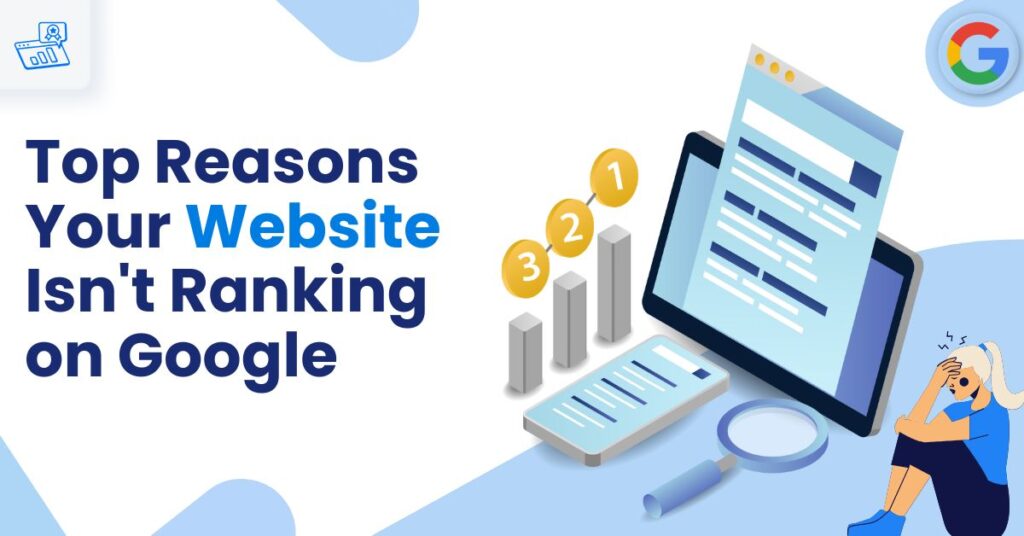In today’s digital landscape, having a strong online presence is crucial for businesses. However, simply having a website isn’t enough – it needs to be optimised for search engines to attract organic traffic and potential customers. This is where an SEO audit comes in.
An SEO audit is a comprehensive evaluation of your website’s performance in search engine results pages (SERPs). By conducting regular audits, you can identify and address issues that may be holding your site back from achieving its full potential. This process not only improves your search rankings but also enhances overall online visibility.
In this guide, we’ll explore the key components of an SEO audit, essential tools to use, and a step-by-step process to conduct your own audit. By the end, you’ll have a clear understanding of how to optimise your website for better search performance.
What is an SEO Audit?
An SEO audit is a thorough examination of your website’s health from a search engine optimization perspective. It involves analysing various elements that impact your site’s visibility and performance in search results. This process helps uncover potential issues that could be hindering your rankings, such as technical problems, content gaps, or poor user experience.
By identifying these issues, you can develop a targeted strategy to address them, ultimately improving your website’s chances of ranking higher in search results. Think of an SEO audit as a regular check-up for your website – it helps maintain its health and ensures it’s functioning at its best.
Tools for Conducting SEO Audit
To perform a comprehensive SEO audit, you’ll need a combination of tools. Here are some essential ones:
- SEMrush/Ahrefs/Moz/Ubersuggest: These all-in-one SEO platforms offer a wide range of features for keyword research, competitor analysis, and site auditing.
- Screaming Frog SEO Spider: This powerful tool crawls your website to identify technical SEO issues and provide detailed reports.
- SEO Analyzer: Various online tools can provide quick insights into your website’s SEO health by analysing key on-page elements.
- Copyscape: This plagiarism checker helps ensure your content is original and not duplicated from other sources.
- Google PageSpeed Insights: It evaluates your website’s loading speed and offers suggestions for enhancement.
- Schema Markup Validator: Use this to check if your structured data is correctly implemented and free of errors.
- Small SEO Tools: Offers a variety of free SEO tools, including a keyword density checker.
- Google Analytics 4 & Google Search Console: These free Google tools provide valuable insights into your website’s performance and search visibility.
Guide to Perform SEO Audit
- Check Website Crawlability and Fix Indexing Issues: Search engines need to be able to access and understand your website’s content (crawlability) and then decide whether to include it in search results (indexability). Google Search Console is used to identify pages that search engines can’t access, and copy-paste the content in the console to identify issues. Tools like Screaming Frog are also beneficial.
- Analyse Organic Traffic: Organic visitors are those who find your website through unpaid search results, making them a valuable source of traffic that doesn’t require advertising costs. Utilise Google Analytics to review your organic traffic trends. Look for patterns or sudden drops that may indicate SEO issues.
- Conduct an On-Page SEO Audit: An on-page SEO audit helps you improve your website’s ranking by identifying and fixing issues like broken links, duplicate content, slow loading times, and poor user experience.
– Examine keyword optimization in titles, meta descriptions, headers, and content.
– Ensure meta titles and descriptions are unique and compelling.
– Check if URLs are descriptive and include relevant keywords. - Check for Keyword Cannibalization: Keyword cannibalization occurs when multiple pages on your website compete for the same keywords, potentially harming your overall SEO performance. Use tools like Ahrefs or SEMrush to identify pages competing for the same keywords. Consolidate or differentiate content as needed.
- Identify Duplicate Content: Duplicate content is content that appears on multiple URLs or is similar to content on other websites, which can confuse search engines and negatively impact your rankings. Use Copyscape or Siteliner to find duplicate content issues. Implement canonical tags or rewrite content to avoid penalties.
- Analyze Page Speed & Performance: Page speed refers to how quickly your website loads, while page performance measures its overall efficiency. Fast page speed is crucial for a positive user experience. Use Google PageSpeed Insights to assess loading times and receive optimization suggestions.
- Evaluate Core Web Vitals: Core Web Vitals (CWVs) are metrics used by Google to assess the quality of a user’s experience on your website. Focus on the three key metrics:
– Largest Contentful Paint (LCP): Measures loading performance
– Interaction to Next Paint (INP): Assesses responsiveness
– Cumulative Layout Shift (CLS): Evaluates visual stability - Assess Mobile-Friendliness: Mobile-friendliness ensures that your website is easy to use and navigate on mobile devices, which is increasingly important in today’s digital landscape. Use Google’s Mobile-Friendly Test to ensure your site performs well on mobile devices.
- Fix Broken Links: A broken link is a hyperlink that doesn’t work, leading to a page or resource that no longer exists. Use tools like Screaming Frog or Ahrefs to identify and fix broken internal and external links.
- Complete Competitive Analysis: Competitive analysis involves studying your competitors to understand their strengths, weaknesses, and strategies, helping you improve your own business.
– Identify top-ranking competitors for your target keywords
– Analyse their content strategy, backlink profile, and on-page optimization
– Find opportunities in their strategy that you can exploit for your benefit - Review Your Sitemap: A sitemap is a file that provides a list of all the pages and other content on your website, making it easier for search engines to crawl and index your site. Ensure your XML sitemap is up-to-date and includes all important pages. Submit it to Google Search Console.
- Identify Content Gaps: A content gap occurs when your website lacks content that users are searching for, potentially missing out on opportunities to attract and engage visitors. Use tools like Ahrefs or SEMrush to find topics your competitors are ranking for that you haven’t covered.
- Evaluate Site Navigation and Structure: The website’s organisation and wayfinding should be clear and intuitive for users. Ensure your site has a logical hierarchy and is easy for users and search engines to navigate.
- Analyse Engagement Metrics: Engagement metrics measure how users interact with your website or content, providing insights into their behaviour and preferences. Review metrics like bounce rate, time on page, and pages per session in Google Analytics to gauge user engagement.
Benefits of Conducting Regular SEO Audits
Regular SEO audits are not just a best practice; they’re essential for maintaining and improving your website’s performance in search engine results. Here are the key benefits of conducting regular SEO audits:
1. Identifies Technical Issues:
- Uncovers crawlability and indexation problems that may be preventing search engines from properly accessing your content.
- Highlights server errors, redirect issues, or broken links that could be harming your site’s performance.
- Helps detect and fix security vulnerabilities that could put your site at risk.
2. Improves Site Performance:
- Identifies factors slowing down your website, allowing you to optimise for faster load times.
- Helps in diagnosing and fixing mobile responsiveness issues, ensuring a good user experience across all devices.
- Pinpoints opportunities to enhance Core Web Vitals, which are crucial for both user experience and search rankings.
3. Enhances Search Engine Rankings:
- Helps optimise on-page elements like titles, meta descriptions, and headers for better search visibility.
- Identifies opportunities to improve internal linking structure, helping distribute page authority more effectively.
- Uncovers content gaps and keyword opportunities that can help you rank for more relevant search terms.
4. Enhances User Experience:
- By fixing technical issues and improving site speed, you create a better experience for your visitors.
- Helps ensure your site is easy to navigate and use, which can improve engagement metrics and conversions.
- Identifies opportunities to improve content quality and relevance, keeping users on your site longer.
5. Provides Competitive Insights:
- Allows you to benchmark your site’s performance against competitors.
- Helps identify successful strategies your competitors are using that you might be missing.
- Uncovers gaps in your competitors’ strategies that you can capitalise on.
Conclusion:
An SEO audit is a crucial process for any website owner or digital marketer looking to improve their online presence. By systematically reviewing your site’s technical health, content quality, and user experience, you can identify areas for improvement and develop a targeted optimization strategy. Remember, SEO is an ongoing process, and regular audits are essential to maintain and improve your search rankings over time.
Ready to elevate your website’s SEO? Gravitas Consulting is here to boost your online presence with our expert SEO services.
Reach out to us at info@gravitasin.com to learn how our comprehensive audit can improve your search rankings and drive organic growth.
Let us uncover hidden technical issues and content opportunities to propel your brand to the top. With our data-driven approach, we’ll transform your digital strategy.












